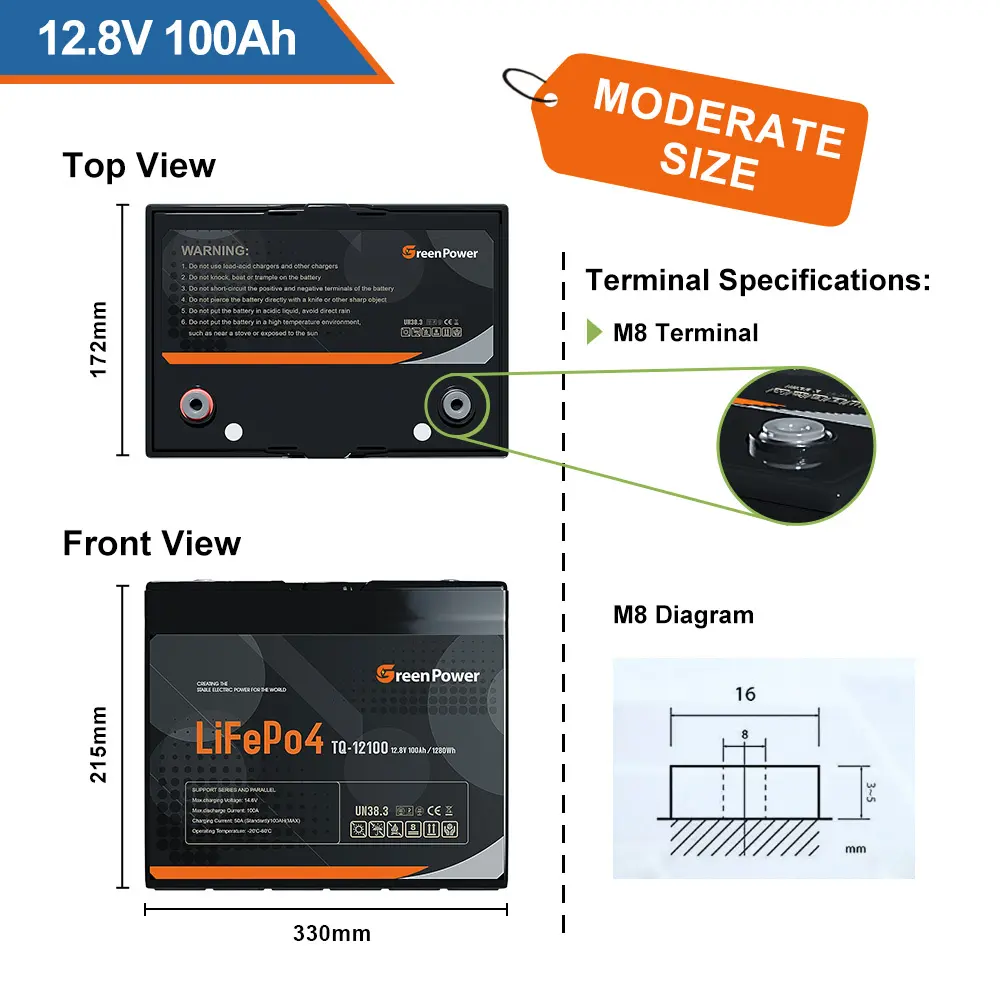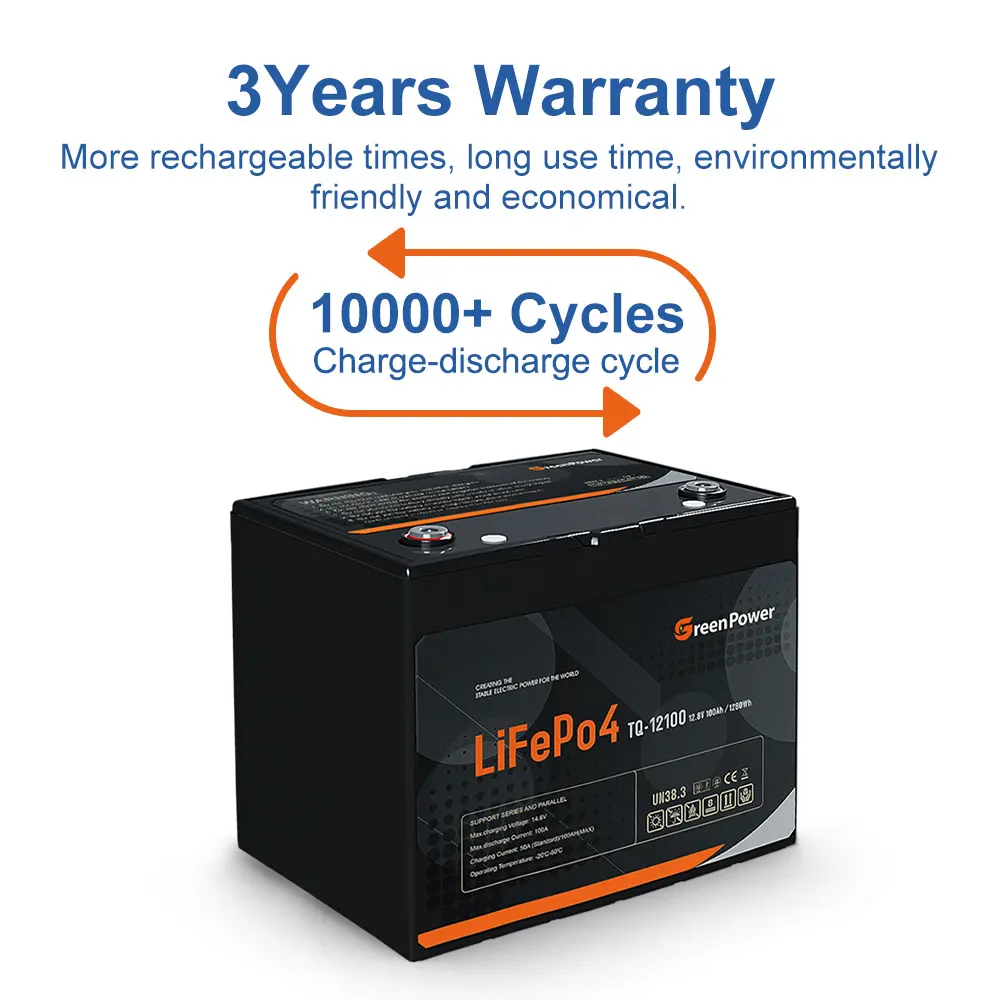Տնային էլեկտրամատակարարման ամբողջական լուծումներ ընտրելու հիմնարար ուղեցույցը
Էլեկտրամատակարարման ընդհատումները կարող են խաթարել ամենօրյա կյանքն ու արտադրողականությունը, ինչը տնային ինվերտորային մարտկոցների գնումը դարձնում է անհրաժեշտ ինվերտորային մարտկոց համար ժամանակակից տնային տնտեսությունների համար անհրաժեշտ ներդրում: Ճիշտ մարտկոցային համակարգը ընտրելու համար անհրաժեշտ է հատուկ ուշադրություն դարձնել տարբեր գործոնների, որպեսզի ապահովվի հուսալի ամրապնակային էլեկտրամատակարարում, որը համապատասխանում է ձեր կոնկրետ պահանջներին: Այս լուծումների ընտրության գործում ձեզ օգնելու համար նախատեսված համապարփակ ուղեցույցը կօգնի ձեզ ճիշտ որոշում կայացնել ձեր տնային էլեկտրամատակարարման համար:

Ինվերտորային մարտկոցների տեխնոլոգիաների հասկանալը
Թողաթթու-թաղանթային մարտկոցների համակարգեր
Ավանդական ավանդային բաթարեաները տնային ինվերտորային համակարգերի համար մնում են հայտնի ընտրություն իրենց ապացուցված հուսալիության և տնտեսական արդյունավետության շնորհիվ: Այս բաթարեաները բաժանվում են երկու հիմնական տեսակների՝ հեղուկ ավանդային և փակ ավանդային: Հեղուկ բաթարեաները պահանջում են հետևողական նորոգում և ջրի լցում, իսկ փակ տեսակները նորոգման կարիք չունեն, սակայն սկզբնական ավելի բարձր գնով են գալիս: Ընտրելիս ինվերտորային մարտկոց տնային օգտագործման համար հաշվի առեք, որ ավանդային տարբերակները առաջարկում են լավ գնի հարաբերությունը և հեշտ հասանելի են:
Լիթիում-իոնային տեխնոլոգիա
Ժամանակակից լիթիում-իոնային բաթարեաները ներկայացնում են ինվերտորային բաթարեաների տեխնոլոգիայի նորագույն ձեռքբերումները: Չնայած սկզբնապես ավելի թանկ են լինում, սակայն առաջարկում են բազում առավելություններ, ներառյալ ավելի երկար ծառայության ժամկետ, ավելի արագ լիցքավորում և նվազագույն նորոգման պահանջներ: Այս բաթարեաները հատկապես հարմար են տների համար, որտեղ առկա է մեծ էլեկտրաէներգիայի պահանջ կամ սահմանափակ տեղադրման տարածք: Նրանց գերազանց ցիկլային կյանքը հաճախ արդարացնում է ավելի բարձր սկզբնական ներդրումը՝ նվազեցնելով փոխարկման հաճախադեպը:
Տարողություն և հզորության պահանջներ
Բեռի պահանջների հաշվարկ
Ձեր տան համար ինվերտորի մարտկոցի ճիշտ հզորությունը որոշելու համար սկզբում անհրաժեշտ է մանրամասն վերլուծել ձեր էլեկտրական հզորության կարիքները: Հաշվարկեք այն կարևոր սարքերի ընդհանուր վատտային հզորությունը, որոնք ձեզ հարկավոր է անջատումների ընթացքում աշխատեցնել: Ներառեք սառնարանները, լույսերը, օդափոխիչները և այլ կարևոր սարքեր: Հաշվի առեք ինչպես աշխատանքային վատտները, այնպես էլ մոտորներով սարքերի համար անհրաժեշտ գործարկման վատտները: Ճիշտ հաշվարկը ապահովում է, որ ձեր մարտկոցային համակարգը կարողանա դիմանալ գագաթնային բեռնվածությանը՝ առանց ավելորդ լարվածության:
Արտակարգ էլեկտրամատակարանման տևողության նախագծում
Հաշվի առեք, թե որքան երկար է ձեզ համար անհրաժեշտ լինելու արտակարգ էլեկտրամատակարանումը ձեր տարածաշրջանում տեղի ունեցող սովորական անջատումների ընթացքում: Եթե էլեկտրականության անջատումները սովորաբար տևում են 2-4 ժամ, ապա ձեր մարտկոցի հզորությունը պետք է համապատասխանի այդ ժամանակահատվածին՝ պահպանելով մարտկոցի նորմալ լիցքի խորությունը: Ավելի երկար կամ հաճախադեպ անջատումներով տարածաշրջանների համար կարող է անհրաժեշտ լինել ներդրում կատարել ավելի մեծ հզորությամբ մարտկոցների կամ մարտկոցների մի քանի բանկաների մեջ՝ անընդհատ էլեկտրամատակարանումն ապահովելու համար:
Տեղադրման և պահպանման դիտարկումներ
Տեղադրում և օդափոխում
Կարևոր է ձեր ինվերտորի բատարեայի ճիշտ տեղադրումը տանը՝ ապահովելու համար օպտիմալ աշխատանք և երկար ծառայություն: Ընտրեք լավ օդափոխվող տեղ, որը պաշտպանված է անմիջկան արևի և ջերմության աղբյուրներից: Եթե տեղադրում եք մի քանի միավոր, ապա ապահովեք բավարար տարածություն բատարեաների միջև: Տեղադրման վայրը պետք է հեշտ մուտք ունենա պահպանման համար, ինչպես նաև պաշտպանված լինի խոնավությունից և փոշուց: Ճիշտ օդափոխությունը կօգնի բատարեայի ավելոց տաքանալուց և կերկարացնի դրա ծառայության ժամանակը:
Պահպանման պահանջներ
Տարբեր տեսակի բատարեաները տարբեր պահպանման կարիքներ ունեն: Ավանդական ակումուլյատորային բատարեաները պահանջում են հեղուկի մակարդակի հսկում և շարժիչի կոնտակտների մաքրում: Պահպանման ազատ բատարեաները պահանջում են պարբերական ստուգում կապերի ամրության և կոռոզիայի նկատմամբ: Ըստ արտադրողի ցուցումների ստեղծեք պահպանման գրաֆիկ՝ ապահովելու համար հուսալի աշխատանք և առավելագույն երկար ծառայություն: Պարբերական պահպանումը կարող է զգալիորեն երկարացնել ձեր ինվերտորի բատարեայի համակարգի կյանքը:
Ըմբռնիչ հնարավորություններ և համակարգչային տեխնոլոգիաներ
Հսկողության համակարգեր
Ժամանակակից ինվերտորային մարտկոցները հաճախ ապահովված են բարդ հսկման հնարավորություններով: Այդ համակարգերը իրական ժամանակում տեղեկություն են տալիս մարտկոցի վիճակի, լիցքավորման կարգավիճակի և մնացած արձակուրդային ժամանակի մասին: Խելացի հնարավորությունները կարող են օգնել մարտկոցի օգտագործումը օպտիմալացնել և ձեզ տեղեկացնել հնարավոր խնդիրների մասին առանց դրանք լուրջ խնդիրներ դառնալու: Ընտրելով ինվերտորային մարտկոց տնային պայմաններում, դիտարկեք հզոր հսկման հնարավորություններ ապահովող մոդելներ ավելի լավ էներգետիկ կառավարման համար:
Ինտեգրացիայի հնարավորություններ
Որոնեք մարտկոցներ, որոնք կարող են ինտեգրվել տնային ավտոմատացման համակարգերում կամ արեգակնային տեղադրումներում, եթե դուք պլանավորում եք ձեր էներգետիկ կայանքները ապագայում ընդլայնել: Խելացի ինտեգրման հնարավորությունները թույլ են տալիս ավելի արդյունավետ կերպով օգտագործել էներգիան և կարող են օգնել նվազեցնել էլեկտրաէներգիայի ծախսերը: Որոշ առաջադեմ համակարգեր նույնիսկ կարող են սովորել ձեր օգտագործման օրինաչափությունները՝ ավտոմատ կերպով օպտիմալացնելու լիցքավորման և լիցքաթափման ցիկլերը:
Շրջակա միջավայրի և տնտեսական գործոններ
Էներգահամարձակության վարկանիշներ
Ընտրելով ինվերտորի մարտկոց տնային օգտագործման համար՝ համեմատեք էներգաարդյունավետության վարկանիշները։ Ավելի բարձր արդյունավետության վարկանիշները նշանակում են ավելի քիչ էներգիայի կորուստ լիցքավորման և կորցնելու ցիկլերի ընթացքում, ինչը հանգեցնում է ավելի ցածր էլեկտրաէներգիայի հաշիվների։ Հաշվի առեք տարբեր մարտկոցների տեխնոլոգիաների ընդհանուր ազդեցությունը շրջակա միջավայրի վրա, ներառյալ դրանց արտադրման գործընթացը և վերջնական օգտագործման հետևանքով վերամշակման տարբերակները։
Դիտարկում են երկար ժամանակի արժեքների վերլուծությունը
Գնահատեք ընդհանուր սեփականաշնորհման արժեքը՝ անցնելով սկզբնական գնի սահմաններից։ Հաշվի առեք սպասարկման ծախսերը, սպասվող ծառայության ժամկետը, երաշխիայի ծածկույթը և հնարավոր էլեկտրաէներգիայի խնայումները։ Չնայած նախնական մարտկոցները կարող են ավելի թանկ լինել, նրանց ավելի երկար ծառայության ժամկետը և ավելի լավ արդյունավետությունը հաճախ ավելի լավ երկարաժամկետ արժեքի է հանգեցնում։ Հաշվի առեք ապագա էլեկտրաէներգիայի տուրքերի միտումները և այն, թե ինչպես կարող է այդ ազդել ձեր ներդրումների վրա։
Հաճախ տրվող հարցեր
Ինչքան է տնային օգտագործման ինվերտորի մարտկոցի սովորական ծառայության ժամկետը։
Ըստ տեխնոլոգիայի և օգտագործման օրինաչափությունների կյանքի տևողությունը զգալիորեն տարբեր է: Ավանդական ակումուլյատորները սովորաբար 3-5 տարի են ծառայում ճիշտ սպասարկման դեպքում, իսկ լիթիում-իոնային մարտկոցները՝ 8-10 տարի կամ ավելին: Կանոնավոր սպասարկումը և ճիշտ օգտագործումը կօգնեն առավելագույնի հասցնել մարտկոցի կյանքի տևողությունը՝ անկախ տեսակից:
Ինչպե՞ս կարող եմ որոշել իմ տան համար ճիշտ մարտկոցի հզորությունը:
Հաշվարկեք ձեր ընդհանուր էլեկտրական պահանջարկը՝ թվարկելով բոլոր կարևոր սարքերը և դրանց վատտային հզորությունը: Բազմապատկեք այդ թիվը ցանկալի ռեզերվային մատակարարման տևողությամբ, ապա ավելացրեք 20%՝ անվտանգության պաշարի համար: Վերջնական որոշումը կայացնելիս հաշվի առեք էլեկտրաէներգիայի սեզոնային տատանումները և ապագայի ընդլայնման կարիքները:
Լիթիում-իոնային մարտկոցները արդյո՞ք արժե ավելի բարձր ներդրումների համար տնային օգտագործման դեպքում:
Շատ տնային տնտեսում լիթիում-իոնային մարտկոցները իրենց բարձր գինը ներդրում են ավելի երկար ծառայության սղությամբ, ավելի լավ արդյունավետությամբ և պահպանման ցածր պահանջներով: Դրանք հատկապես արժեքավոր են հաճախադեպ էլեկտրամատակարարման ընդհատումներով կամ սահմանափակ տարածք ունեցող տարածքներում: Այնուամենայնիվ, որոշումը պետք է հիմնված լինի ձեր կոնկրետ կարիքների և բյուջեի սահմանափակումների վրա:
Բովանդակության աղյուսակ
- Տնային էլեկտրամատակարարման ամբողջական լուծումներ ընտրելու հիմնարար ուղեցույցը
- Ինվերտորային մարտկոցների տեխնոլոգիաների հասկանալը
- Տարողություն և հզորության պահանջներ
- Տեղադրման և պահպանման դիտարկումներ
- Ըմբռնիչ հնարավորություններ և համակարգչային տեխնոլոգիաներ
- Շրջակա միջավայրի և տնտեսական գործոններ
- Հաճախ տրվող հարցեր

